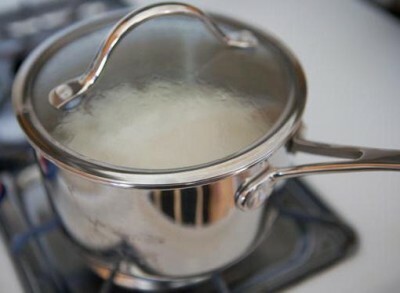1 Onset of infection
Causes of toxic infections - contact with the source of infection. It can be both people and animals. In most cases, these are subjects suffering from purulent diseases - furunculosis, angina. Animals can be infected by mastitis. This type of animal isolates the pathogens that caused poisoning, getting into the food during their preparation. At the time of food processing, the process of reproduction and accumulation of pathogens occurs.

We recommend that you familiarize yourself with
- Symptoms of intestinal candidiasis in women
- Symptoms and treatment of food poisoning in children
- Main symptoms and treatment of dysentery
- Effective remedy for gastritis and stomach ulcer
Not only patients, but also carriers of pathogens are a danger. Part of the microorganisms that provoke foodborne toxic infections, animals and humans are secreted during defecation. The storage reservoir of these pathogenic bacteria can be soil, ponds, etc.
The main mechanism of transmission is the fecal-oral method, and the main way of poisoning is food. A large percentage of the causes of intestinal infections are attributed to the use of spoiled meat and milk products, canned food, confectionery. Sometimes the development of this type of infection is preceded by repeated defrosting of foods and their constant heating. Intestinal infection can get into the body and with water, which is used for food.
Often foods that contain enterotoxins do not differ from normal ones. They can not emit a bad smell, have a normal taste and appearance. Poisoning can occur in the form of sudden outbreaks, which are characterized by a variety of symptoms. More often than not, cases of poisoning occur in the summer season - an infection-friendly period. People have a very high level of susceptibility to this type of infection, as they very often eat cold snacks, hot dogs, fast food, in which the main meat ingredients do not have sufficient heat treatment.
-
 IMPORTANT TO KNOW! Gastritis? Ulcer? To have a stomach ulcer not turned into cancer, drink a glass. ..Read the article & gt; & gt;
IMPORTANT TO KNOW! Gastritis? Ulcer? To have a stomach ulcer not turned into cancer, drink a glass. ..Read the article & gt; & gt;
Foodborne disease infections multiply under condition:
- of poor human body resistance;
- of the associated comorbidities;
- in the defeat of the intestinal microflora as a result of the use of antibiotics.
The most susceptible to this kind of infections are: newborns, small children, people with weakened immunity, who underwent surgical operations.
2 Symptomatics
The main characteristic that distinguishes foodborne toxins is the ability to synthesize different types of enterotoxins and endotoxins, which in its diagnosis and clinical demonstrations has its own characteristics. Characteristic symptoms and short incubation period indicate the special role of these toxins. Different types of toxins can have their own particular signs, characteristic manifestations of gastroenteritis of certain types of intoxication syndromes, cause hypersecretion of fluid into the lumen of the intestine.

The incubation period can last up to several hours, and can have a shortened half-hour process. There are cases when it comes to a day or more. Clinical manifestations of intoxication syndrome are the same with different types of toxins:
-
 Gastroenterologist VAZHENOV: "I beg you, if you began to worry about abdominal pain, heartburn, nausea, do not do gas in any way. .."Read more & gt; & gt;
Gastroenterologist VAZHENOV: "I beg you, if you began to worry about abdominal pain, heartburn, nausea, do not do gas in any way. .."Read more & gt; & gt;
- nausea;
- gag reflex;
- diarrhea with a frequency of more than 10 times a day;
- abdominal pain in the form of fights;
- elevated body temperature;
- general malaise;
- headache.
The more fluid a person loses in the process of poisoning and the manifestation of clinical symptoms, the greater the degree of severity of the disease. As a rule, pronounced symptoms are manifested only for 3 days and no more. In some cases, poisoning with Staphylococcus toxin can demonstrate rapid development and the manifestation of symptoms: only pain in the epigastric region can change. It becomes like a stomach colic. Infection with clostridia complements the general symptoms of blood in the stool, there may be an increase in the liver.
Doctors strongly recommend that if there are cramps in the legs, lowering blood pressure, rapid heartbeat, urgently call an ambulance. Strong diarrhea contributes to dehydration of the body, which is the reason for the disruption of further work of internal organs.
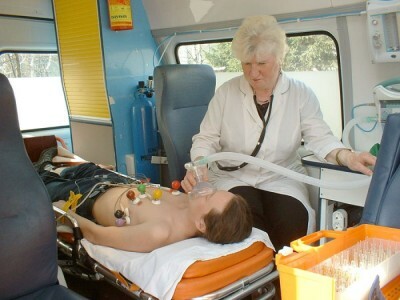
3 Diagnostic measures
Foodborne toxic infections are diagnosed in many ways. Their basis is differentiated and laboratory diagnosis. Symptoms of the disease doctors consider it necessary not to put on a par with the manifestations of salmonellosis and other acute intestinal ailments, such as enteritis, shigellosis, cholera, etc. It is necessary to distinguish food from toxic and from diseases of the gastrointestinal tract, gynecological and surgical pathological processes.
TIP FROM THE MAIN GASTROENTEROLOGIST
Korotov SV: "I can recommend only one remedy for the rapid treatment of Ulcer and Gastritis, which is now recommended by the Ministry of Health. .." Read testimonials & gt; & gt;

Symptoms of poisoning are also diagnosed by laboratory methods. This occurs by isolating the pathogen in the study of vomit. As a rule, the possibility to determine exactly the pathogen that provoked the characteristic symptoms is extremely rare. To prove his involvement in the disease, research is carried out using serological reactions with an auto-stem, and by isolating the pathogen from the infected food and establishing its identity.
Based on the diagnosis, doctors share the poisoning, which provoked the appearance of acute gastroenteritis caused by different pathogens: bacteria, cholera vibrio, drugs, infection with toxins of certain species of fungi.
Common complications that can cause foodborne toxic infections are heart failure, sepsis, circulatory blood vessel deficiency.
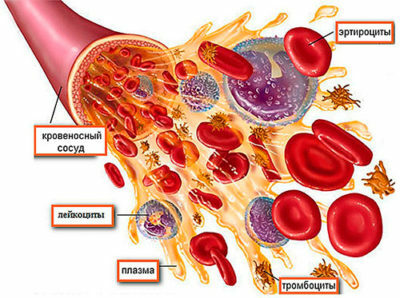
4 Pediatric Toxic Infection
Food toxicosis in children from the disease in adults is not particularly different. A group of risk is considered to be children of preschool and school age. Intestinal poisoning in a child can develop against the background of ingestion of E. coli or staphylococcus. Often this happens as a result of non-observance of sanitary norms in preschool and school institutions, in the family. Malicious microorganisms can get on items that are often taken by the kid in the mouth, on food. Sometimes, with negligence on the part of adults, outbreaks of infectious diseases occur in summer camps, kindergartens, maternity homes to the sanitary standards for the storage and use of food.
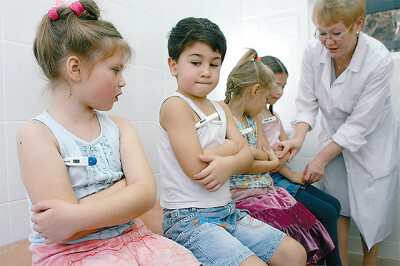
Especially dangerous is the disease for newborns, which are very hard to tolerate.
The characteristic symptoms accompanying the development of children's intestinal toxic infections are: nausea, vomiting, diarrhea, acute pain in the navel.
Dysbacteriosis of the intestines may become a complication in children. If this type of infection has infected a newborn, it can also have purulent eruptions, signs of stomatitis, an infectious-toxic shock. At a similar severity of the disease, doctors recommend urgently showing the baby to the doctor so that he can prescribe the appropriate treatment for the child.

5 How to get rid of the disease
Symptomatic food poisoning should be a reason for medical examination with a specialist. Foodborne toxicosis, the treatment of which is carried out at home, involves the lavage of the stomach before the arrival of an ambulance team. To this end, use a weak solution of baking soda or potassium permanganate. You should drink at least 2 liters of fluid a day to induce vomiting reflex, which can significantly alleviate the condition of the patient. The stomach is washed until clean water appears.

To neutralize the detrimental effect of toxins, enterosorbents are used: Smectu, Activated Carbon, Polyphepan, Atoxyl. In the hospital, to replace lost in the process of vomiting and diarrhea, liquid is prescribed Chlosol, Trisol.
Only after the end of gastric lavage the patient can be given antiemetics. To stop diarrhea appoint Nifuroxazide, Loperamide, Imodium. You can not take these and other drugs yourself without prescribing a doctor. After the recovery of the defecation process, it is recommended to restore the intestinal microflora. The best means for this purpose are Linex, Bioflora, Bifidumbacterin, enzymes( to improve digestion and assimilation of food).
Treatment of foodborne antibiotics is prescribed in the most extreme cases, but only for the purpose of affecting pathogenic microorganisms. They can not cope with toxins. Sometimes doctors prescribe Levomycetin. In view of the fact that this strong preparation eliminates not only pathogenic bacteria, but also can damage the intestinal microflora, it is prescribed in the most extreme cases. In acute forms of the disease, accompanied by severe symptoms, doctors prescribe Cephix, Phthalazol, Ersefuril( antibiotics with low toxicity).
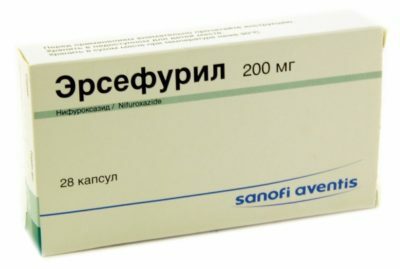
6 Diet in the pathology of
The final stage of treatment is the right, gentle and balanced diet. The therapeutic process involves the elimination of food irritating the intestines: oily, fried foods, foods rich in carbohydrates. You can not eat smoked products, fresh vegetables and fruits, bread, eggs. Completely worthless to give up sweets.

It is strictly forbidden to include in the diet canned fish and meat, carbonated drinks, strong broths, various kinds of dairy products. Since the amount of secreted gastric juice after intoxication is significantly reduced, you should eat food in small portions. For several days, the food should be consumed in a soft and ground condition for better digestion.
You can eat no more than two eggs a day during the diet, home-made crackers, steam omelette, buckwheat porridge cooked on the water, skimmed fresh cottage cheese, steamed burgers and meatballs. In order not to violate the water-salt balance in the body, it is necessary to drink at least 2 liters of liquid daily. It is better, if it will be broths of a dogrose, a bird cherry, a camomile, a black currant.
7 What you need to know for the prevention of
Prevention of foodborne infections is the observance of the rules of personal hygiene, which are expressed in the constant washing of hands before eating and after going to the toilet. Before you eat yourself or give your child, vegetables and fruits should be thoroughly washed, preferably with hot water. It is of great importance to give the indicated shelf life of the products indicated on the label. You should not buy those that have expired or expire in a week. These products are already dangerous.
In unfamiliar places you can drink only water in clogged containers. Toxicoinfections are frequent companions of travelers. It is worth remembering: raw vegetables, fruits, unboiled tap water, ice-cream drinks are best avoided, especially if traveling far from home or home country.
If you have symptoms of food poisoning, do not take any risks, visit a doctor.
- 1 Infection
- 2 Symptoms
- 3 Diagnostic measures
- 4 Pediatric Toxic Infection
- 5 How to get rid of the disease
- 6 Diet for pathology
- 7 What you need to know for the prevention of
One of the most common varieties of acute intestinal lesions is foodborne disease. The intestinal disease caused by it develops as a result of the use of poor-quality or spoiled food products in which harmful micro-organisms are located, as well as ignoring the sanitary rules on the part of the person who prepares them and acquires them.
The causative agents of food toxic infections are different in their classification of bacteria, including Staphylococcus aureus. The complexity of fighting against them is that foodborne toxic infections are resistant to external conditions and are not at all afraid of high temperatures. It is very important to take into account the fact that the development of pathogenic microorganisms can be caused by improper storage conditions for food.
Do you have gastritis?
GALINA SAVINA: "How easy is it to cure gastritis at home for 1 month. A proven method - write down a recipe. ..!"Read more & gt; & gt;

